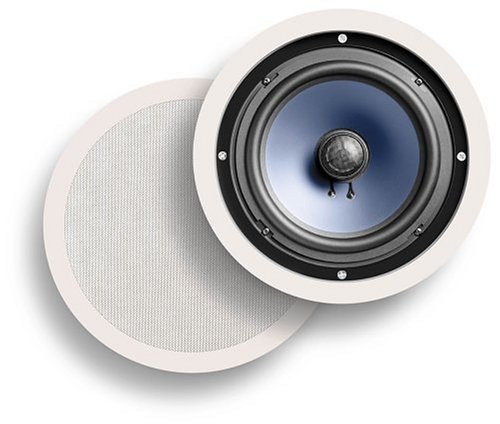There continues to be a great deal of activity surrounding the update to NFPA 70E scheduled to be published in October 2008. For the proposed 2008 edition of NFPA 70, National Electrical Code® (NEC®), the Technical Correlating Committee (TCC) received 3,668 proposals and 3,206 comments during the revision cycle. For those of us involved in working with energized electrical circuits the outcome of the new standards will likely impact how we do our job. The goal is to increase safety through well thought through practices.
Roof Mounted Monitor
How are Thermographers Addressing the Issue?
Roof Mounted Monitor
Increasing the distance at which inspections of open cabinets are performed.
Most cameras offer telephoto lens that enable the thermographer to stand 2 to 3 times further away from the energized components while maintaining the same resolution. In addition newer high definition cameras will provide the same performance as 320x240 array based cameras at twice the normal standoff.
New Language Being Drafted by NFPA and ASTM
ASTM E-1934
New language is being proposed in the next version of ASTM E-1934, Standard of Examining Electrical Power Distribution Equipment with Infrared Technology. 7.5 - As an alternative, consideration may be given to conducting the examination through "windows" that are transparent to detected infrared radiation or to "ports." Safety procedures should be modified to accommodate this task. Care must be taken to insure that all equipment can be seen and special lenses may be required.
Did You Know?
Incident energy from an arc flash created with vertical, unterminated conductors in a cabinet (20" x 20" x 20") decreases by the inverse of the distance to the 1.5 power. If the arc has horizontal conductors that point out of the cabinet opening or vertical which terminate into an insulated barrier, the exposure may decrease by a lower exponent, but not enough data has been collected on these conductor configurations. - Tom Neal of Neal Associates
Next Revision of NFPA 70E
The following new language has been submitted to, and is being considered, by the 70E committee: "When access to conduct such inspections of energized equipment is limited by the appropriate use of special windows or small access ports, rather than by gaining access though opening the enclosure door, the limit of the approach, and the required PPE, will be the same as if the enclosure door were left unopened."
Increased diligence of OSHA
Although it is only referenced in OSHA 29 CFR Part 1910 Subpart S, Appendix A, NFPA 70E is considered by OSHA to be the recognized industry practice for electrical safety.
Role of NFPA
OSHA standards don't provide details on how to conduct an electrical hazard assessment or how to select PPE. For guidance on compliance, you need to look to national consensus standards. NFPA is one of the foremost consensus standards for electrical safety. It covers employee protection from the electrical hazards of shock, arc flash and arc blasts.
NFPA Compliance Part I - Installation Safety Requirements
Covers safety requirements for the design and installation of electric conductors and equipment. Essential to the proper use of Part I of this standard is the understanding that it is not intended to be applied as a design, installation, modification, or construction standard for an electrical installation or system. Its content has been intentionally limited in comparison to the content of the NEC in order to apply to an electrical installation or system as part of an employee's workplace. This standard is compatible with corresponding provisions of the NEC, but is not intended to, nor can it, be used in lieu of the NEC.
Part 2 - Safety Related Work Practices
Covers electrical safety related work practices and procedures for employees who work on or near exposed energized electrical conductors or circuit parts. Electrical hazard includes arc flash. Relevant requirements include:
Power must be proven to be off before performing work.
This includes:
The safe interruption of the load and opening of the disconnect
Visual verification/voltage testing to ensure deenergization
Covers practical safety-related maintenance requirements for electrical equipment and installations in workplaces.
Part 4 - Safety Requirements for Special Equipment
Covers electrical safety installation requirements and safety-related work practices and procedures for employees who work on or near special electrical equipment such as electrolytic cells.
Preventing Arc Flash Incidents
Step 1. Perform Hazard Assessment and Create Warning Labels
The label is the first step. However, determining the arc-flash levels may change as routine maintenance and repair is performed. The level of arc-flash hazard of any piece of equipment depends on the level of arc-fault current and the time it takes to trip the nearest upstream over current protection device. In most cases, a local utility engineer can determine the fault current levels; however these fault current values may be based on the impedance of the transformer that serves the facility, and additional impedances upstream of the transformer can lower the number. If these additional impedances are not included in the calculations, then the incident energy levels may be under-estimated. Short-circuit current levels in electric utility systems are continuously changing as both electricians and maintenance workers replace over current devices, fuses and panel boards or upgrades are made to the system. Any of theses changes can have an effect on the arc-flash energy level, but may not be noted on the warning label.
Step 2. Provide Protective Clothing
The next step is to ensure that anyone working on equipment that might generate arc flash wear protective clothing, including fire retardant suits, gloves, face shield/goggles and other gear as provided by the standards.
Step 3. Equipment That Limits Exposure
Although no single piece of equipment can completely eliminate arc flash hazards, making it convenient to perform most routine maintenance tasks without directly accessing the equipment can significantly reduce the risk. Providing external plug-ins to equipment inside an enclosure is one approach. Properly designed and insulated panels that are wired to the appropriate equipment inside allows operators to change settings and monitor performance without opening the enclosure. With a traditional disconnect switch inside the main enclosure, live power is still present on the line side of the disconnect switch. Since live power is still being fed upstream to the disconnect switch on the panel, the threat of an arc flash incident remains. Another approach is to develop arc-resistant electrical cabinets designed to contain the arc energy and direct it away from personnel- - they cannot prevent an arc flash. "Arc-resistant" describes equipment designed to control arc flash exposure by extinguishing the arc, by controlling the spread of the arc or by channeling the arc pressure wave away from personnel. Arc-resistant designs represent enhanced safety technology and, therefore, an enhanced level of safety." The design redirects arc flash energy out relief vents at the top of the unit and away from personnel through an overhead plenum. These products have been successfully tested in accordance with ANSI C37.20.7: IEEE Guide for Testing Medium-Voltage Metal- Enclosed Switchgear for Internal Arcing Faults. During testing, cotton squares (similar to 4.5 oz/yard untreated T-shirt material) are mounted a meter from the MCC. Acceptance criteria require that none of the cotton indicators ignite during or following a test. To redirect the arc exhaust gases, specialized silicone coated, aluminum pressure relief vents on the unit's roof open to release the pressure. A plenum system above the enclosure channels the superheated gas and vaporized copper and steel to a safe and controlled location.
Standards Organizations and Arc Flash Protection
To protect operators, OSHA and NFPA 70E standards require a "flash protection boundary." OSHA has adopted the National Fire Protection Association's "70E Standards for Electric Safety in the Workplace" as an acceptable means of compliance to meet this requirement. Section 1910.333 of Subpart S states: "Safety-related work practices shall be employed to prevent electrical shock or other injuries resulting from either direct or indirect electrical contacts". Therefore companies should take great lengths to ensure that electrical workers are safe from arc-flash dangers.
References:
Organizations Involved In This Work
NFPA - The National Fire Protection Agency
The mission of the international nonprofit NFPA is to reduce the worldwide burden of fire and other hazards on the quality of life by providing and advocating consensus codes and standards, research, training, and education. NFPA membership totals more than 81,000 individuals from around the world and more than 80 national trade and professional organizations. Established in 1896, NFPA serves as the world's leading advocate of fire prevention and is an authoritative source on public safety. In fact, NFPA's 300 codes and standards influence every building, process, service, design, and installation in the United States, as well as many of those used in other countries. NFPA's focus on true consensus has helped the association's code-development process earn accreditation from the American National Standards Institute (ANSI).
OSHA - Occupational Safety & Health Administration
OSHA's mission is to send every worker home whole and healthy every day. Since the agency was established in 1971, workplace fatalities have been cut by 62 percent and occupational injury and illness rates have declined 40 percent. At the same time, U.S. employment has nearly doubled from 56 million workers at 3.5 million worksites to 115 million workers at nearly 7 million sites.
ASTM
ASTM International (Originally known as the American Society for Testing and Materials) is one of the largest voluntary standards development organizations in the world-a trusted source for technical standards for materials, products, systems, and services. Known for their high technical quality and market relevancy, ASTM International standards have an important role in the information infrastructure that guides design, manufacturing and trade in the global economy.
IEEE - IEEE Electrical Safety
A predominant area of standards activity within the IEEE-SA addresses technology and related safety needs for the power and energy industry and subsequent industry applications. A key component to electrical safety is for those working with electrical current and within environments using electrical current to be abreast of standards and regulations that include safety best practices. It is critical for employees to familiarize themselves with these documents and the organizations responsible for developing them. The IEEE, namely via its Color Books Standards for Industrial and Commercial Power Systems and the National Electrical Safety Code, as well as its Power Engineering standards, is a major developer of standards that directly or indirectly address electrical safety within specific applications or environments.
NFPA 70E And Its Impact On Thermographers
Roof Mounted Monitor
Oct 19, 2011 08:25:56

Click for larger image and other views
 >> Click here to update Cheapest prices for Brand New Tview T90dvfd-beige All in One Huge 9" Flip Down, Roof Mount Car Monitor with Built in Dvd, Cd, Mp3 Player + Usb Input + Sd Card Reader + Ipod Interface + Ir Transmitter + Dome Lights + Swiveling Screen and Built in Fm Modulator <<
>> Click here to update Cheapest prices for Brand New Tview T90dvfd-beige All in One Huge 9" Flip Down, Roof Mount Car Monitor with Built in Dvd, Cd, Mp3 Player + Usb Input + Sd Card Reader + Ipod Interface + Ir Transmitter + Dome Lights + Swiveling Screen and Built in Fm Modulator <<
Brand New Tview T90dvfd-beige All in One Huge 9" Flip Down, Roof Mount Car Monitor with Built in Dvd, Cd, Mp3 Player + Usb Input + Sd Card Reader + Ipod Interface + Ir Transmitter + Dome Lights + Swiveling Screen and Built in Fm Modulator Feature
- Built in IR Transmitter for wireless headphone (2.3/2.8MHz & 3.2/3.8MHz)
- Built in FM Modulator (87.7 to 89.1 MHz)
- Built in Speakers
- Built in SD/MMC/ MS Car Reader
- Compatible with DVD/VCD/CD/MP3/CD-R/CD-RW/DIVX
Brand New Tview T90dvfd-beige All in One Huge 9" Flip Down, Roof Mount Car Monitor with Built in Dvd, Cd, Mp3 Player + Usb Input + Sd Card Reader + Ipod Interface + Ir Transmitter + Dome Lights + Swiveling Screen and Built in Fm Modulator Overview
BRAND NEW TVIEW T90DVFD-BEIGE ALL IN ONE HUGE 9" FLIP DOWN, ROOF MOUNT CAR MONITOR WITH BUILT IN DVD, CD, MP3 PLAYER + USB INPUT + SD CARD READER + IPOD INTERFACE + IR TRANSMITTER + DOME LIGHTS + SWIVELING SCREEN AND BUILT IN FM MODULATORFeatures:9" Flip down monitor with built in DVD/SB/SD and Ipod interfaceBuilt in IR Transmitter for wireless headphone (2.3/2.8MHz & 3.2/3.8MHz)Built in FM Modulator (87.7 to 89.1 MHz)Built in USB port (IPOD Ready)Built in SD/MMC/ MS Car ReaderBuilt in SpeakersDisplay format Wide Scren 16:9High Resolution: 640*234/1440*234Swivel MonitorCompatible with DVD/VCD/CD/MP3/CD-R/CD-RW/DIVXColor System: PAL & NTSC CompatibleDVD player is region freeOne Video & Audio InputOne Video & Audio OutputActive Matrix TFT DisplayBuilt in dual dome lightsLast Scene MemoryMulti language on screen display menu with subtitlesFull function remote Includes Wiring + Mounting hardwareBrightness, Contrast, Color, and Tint ControlsDimensions of the unit: 10" x 10" x 1.8"Unit Weight: 4.8 lbsAvailable in Black, Grey & Tan
SAVE NOW on the special offers below!
Available In Stock. |
| This Brand New Tview T90dvfd-beige All in One Huge 9" Flip Down, Roof Mount Car Monitor with Built in Dvd, Cd, Mp3 Player + Usb Input + Sd Card Reader + Ipod Interface + Ir Transmitter + Dome Lights + Swiveling Screen and Built in Fm Modulator ships for FREE with Super Saver Shipping. |
|

Limited Offer Today!! Brand New Tview T90dvfd-beige All in One Huge 9" Flip Down, Roof Mount Car Monitor with Built in Dvd, Cd, Mp3 Player + Usb Input + Sd Card Reader + Ipod Interface + Ir Transmitter + Dome Lights + Swiveling Screen and Built in Fm Modulator Black Friday and Cyber Monday Deals
Flat Screen Tv Industrial Tools














